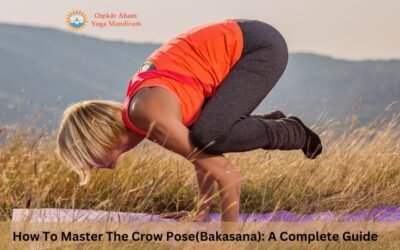High blood pressure, also understood as hypertension, is a common condition affecting millions worldwide. It is usually called the “silent killer” because it can cause significant damage to the body without showing any noticeable symptoms. While many medications are open to help manage high blood pressure, yoga has emerged as a popular alternative therapy for hypertension. You can learn this yoga pose in our yoga retreat in a natural environment. In this article, we’ll explore the benefits of yoga for high blood pressure and some of the best yoga poses for managing hypertension.
Understanding High Blood Pressure
Before diving into yoga’s benefits, let’s first understand what increased blood pressure is and how it affects the body. Blood pressure is the power that your blood exerts on the walls of your arteries as it circulates through your body. When your blood pressure is overly high, it can cause damage to your arteries, which can guide to serious health complications such as heart attack, stroke, and kidney disease.
How Yoga Can Help Manage High Blood Pressure
Several studies have shown that practising yoga regularly can help lower blood pressure. Yoga is a low-impact exercise that combines physical movements with breathing techniques and meditation. Yoga is believed to help lower blood pressure by reducing stress and promoting relaxation.
Best Yoga Poses For High Blood Pressure
Here are some of the best yoga poses for managing high blood pressure:
Sukhasana (Easy Pose)
Sukhasana, the Easy Pose, is a simple cross-legged sitting posture perfect for beginners. This pose helps to calm the mind and relieve stress, which can help lower blood pressure. To perform this pose, sit on the floor with your legs struck and your hands resting on your knees. Shut your eyes and take deep breaths in and out through your nose.
Adho Mukha Svanasana (Downward-Facing Dog Pose)
The Downward-Facing Dog Pose is an outstanding yoga pose for stretching the spine and improving circulation. It also helps to calm the mind and reduce stress, which can help lower blood pressure. To perform this pose, start on your hands and knees and then raise your hips up and back to make an inverted “V” shape with your body.
Paschimottanasana (Seated Forward Bend)
The Seated Forward Bend is a calming yoga pose that helps to stretch the hamstrings and lower back. It also helps to calm the mind and reduce stress, which can help lower blood pressure. To perform this pose, sit on the floor with your legs extended in front of you. Inhale and reach your arms up, exhale, and fold over your legs, reaching for your feet.
Setu Bandha Sarvangasana (Bridge Pose)
The Bridge Pose is a mild backbend that allows you to stretch the chest, neck, and spine. It also helps to improve circulation and reduce stress, which can help lower blood pressure. To perform this pose, lie on your rear with your knees bent and your paws flat on the floor. Then, lift your hips towards the ceiling, keeping your feet and hands on the floor.
Savasana (Corpse Pose)
The Corpse Pose is a relaxing yoga pose that helps to calm the mind and reduce stress. It also helps to lower blood pressure by promoting relaxation and decreasing tension in the body. To perform this pose, lie on your back with your arms at your flanks and your palms facing up. Shut your eyes and focus on your breath, allowing your body to completely relax.
Precautions And Tips
While yoga can be beneficial for managing high blood pressure, it is essential to take some precautions. Here are some tips to keep in mind:
- Continually consult your healthcare provider before starting a new exercise program, especially if you have high blood pressure.
- Choose a qualified yoga instructor with experience working with people with high blood pressure.
- Practice yoga in a quiet and peaceful environment to help reduce stress.
- Avoid practising yoga poses that put pressure on the neck or require you to breathe.
Conclusion
In conclusion, practising yoga can be a safe and effective way to manage high blood pressure. Yoga helps to promote relaxation, reduce stress, and improve circulation, all of which can help lower blood pressure. If you have high blood pressure, consider adding yoga to your daily routine as a complementary therapy to your existing treatment plan.
Yoga gives positive energy to the body and mind. It makes you happier and more hopeful in life. You can also join our yoga classes at Omkar Aham Yoga Mandiram.
For further details contact us at:
Call/WhatsApp: +91-9997744876
Mail us at: info@yogateachertrainingschool.com




